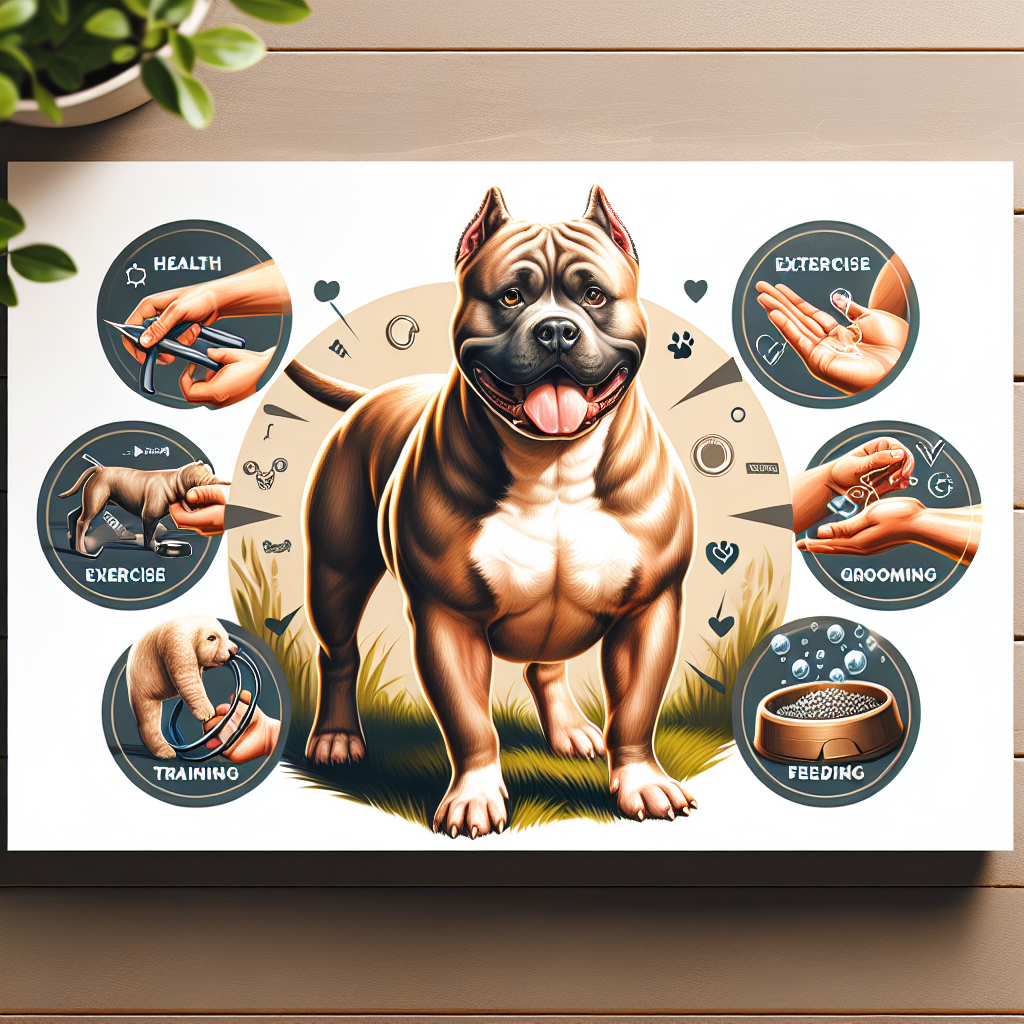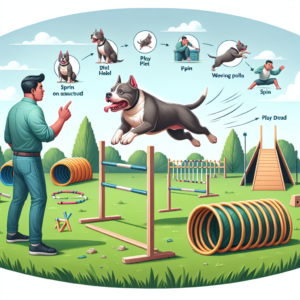Contents
- 1 Introduction to the Breed
- 2 Physical Characteristics of the American Bully
- 3 Temperament and Personality of the American Bully
- 4 Health and Lifespan of the American Bully
- 5 Exercise and Activity Needs of the American Bully
- 6 Training and Intelligence of the American Bully
- 7 Grooming and Maintenance of the American Bully
- 8 Feeding and Nutrition for the American Bully
- 9 Suitable Living Arrangements for the American Bully
- 10 Socialization and Interaction for the American Bully
Introduction to the Breed
The American Bully is a unique and beloved dog breed that has captured the hearts of enthusiasts worldwide. Developed in the United States in the 1980s and 1990s, the American Bully emerged from a selective breeding process that combined the traits of the American Pit Bull Terrier, American Staffordshire Terrier, and other bulldog breeds. The goal was to create a companion dog with a muscular build, gentle demeanor, and loving personality.
Initially designed to be a loyal and affectionate family pet, the American Bully also excels in obedience and companionship roles. Over time, its purpose evolved beyond that of a mere pet, with many owners showcasing their dogs in shows and events that highlight their physical and mental attributes. The breed is recognized by various organizations, including the United Kennel Club (UKC) and the American Bully Kennel Club (ABKC), cementing its status as a distinct breed. Its popularity continues to grow due to its striking appearance and friendly nature.
Physical Characteristics of the American Bully
American Bullies are known for their powerful, athletic builds and distinctive features. They come in several size categories, including Standard, Pocket, Classic, and XL, with weights ranging from 30 to 150 pounds, depending on the type. Despite their muscular appearance, they are compact and well-proportioned, giving them a striking and confident stance.
Their short, glossy coat is easy to care for and comes in a wide array of colors and patterns, including solid colors, brindles, and piebalds. Popular colors include blue, black, white, fawn, and a variety of combinations. Unique physical features of the breed include their broad chest, blocky head, and well-defined jawline. Many owners choose to leave their ears natural, though ear cropping is also common and can vary by regional preference.
Temperament and Personality of the American Bully
One of the most endearing qualities of the American Bully is its friendly and outgoing temperament. These dogs are known for their love of people, often forming strong bonds with their families. Despite their tough appearance, they are gentle, patient, and highly affectionate, making them excellent companions for children and other pets.
American Bullies are eager to please and thrive in environments where they receive ample attention and positive reinforcement. Their playful nature and tolerance make them well-suited for households of all kinds, from busy families to singles seeking a loyal friend. However, their strong personalities require consistent training and socialization to ensure they develop into well-mannered adults.
Health and Lifespan of the American Bully
With proper care, American Bullies typically live between 10 and 12 years. However, they can be prone to certain health issues, many of which are genetic. Common concerns include hip dysplasia, heart conditions, and skin allergies. Breeders who adhere to ethical practices often perform health screenings to minimize these risks.
To maintain your American Bully’s health, ensure they have a balanced diet, regular exercise, and routine vet check-ups. Vaccinations, flea and tick prevention, and dental care are also essential for their overall well-being. Monitoring their weight and providing joint supplements as they age can help prevent health issues and extend their quality of life.
Exercise and Activity Needs of the American Bully
American Bullies are active dogs that require regular physical and mental stimulation to stay happy and healthy. Daily walks, play sessions, and activities like fetch or tug-of-war can help burn off their energy and prevent boredom. While they enjoy bursts of activity, they are not hyperactive and will appreciate downtime with their families.
Mental stimulation is just as important as physical exercise. Providing puzzle toys, training sessions, and interactive games can help keep their minds sharp and prevent destructive behavior. Tailor activities to your dog’s individual energy level and size, ensuring their exercise routine suits their specific needs.
Training and Intelligence of the American Bully
Training an American Bully is a rewarding experience due to their intelligence and eagerness to please. These dogs respond well to positive reinforcement methods, such as treats, praise, and play. Early training and socialization are crucial for fostering good behavior and preventing potential issues as they mature.
Consistency is key when training an American Bully. Their strong-willed nature may lead to occasional stubbornness, but patience and clear communication can overcome these challenges. Focus on building trust and establishing yourself as a confident leader. Common behavioral issues, such as pulling on the leash or excessive barking, can be addressed through regular training sessions and redirection techniques.
Grooming and Maintenance of the American Bully
The American Bully’s short coat makes grooming relatively simple. Weekly brushing with a soft-bristle brush or grooming glove helps remove loose fur and maintain a shiny coat. Bathing is only necessary every few months or as needed, as over-bathing can strip their skin of natural oils.
In addition to coat care, pay attention to dental hygiene, ear cleaning, and nail trimming. Brushing their teeth regularly and providing dental chews can help prevent plaque buildup. Check their ears for dirt or signs of infection, cleaning them with a veterinarian-approved solution. Trim their nails as needed to prevent discomfort and injury.
Feeding and Nutrition for the American Bully
American Bullies thrive on a high-quality diet tailored to their size, age, and activity level. Look for dog foods rich in protein and healthy fats, with limited fillers and artificial additives. Portion sizes vary depending on the dog’s weight and energy needs, but two meals per day are generally recommended.
Special dietary considerations may include joint supplements, omega-3 fatty acids for skin health, or a grain-free formula if your dog has sensitivities. Consult your veterinarian for guidance on choosing the best diet for your pet, and always provide fresh water to keep them hydrated.
Suitable Living Arrangements for the American Bully
American Bullies are versatile dogs that can adapt to various living environments, including apartments, houses, and rural settings. While they enjoy outdoor playtime, they prefer being indoors with their families and should not be left outside for extended periods.
Ensure your home provides enough space for your dog to move comfortably, especially for larger size categories like the XL American Bully. Regular walks and access to a secure yard can meet their exercise needs, but their primary happiness comes from spending quality time with their loved ones.
Socialization and Interaction for the American Bully
Early socialization is essential for raising a well-adjusted American Bully. Introduce them to different people, animals, and environments from a young age to build their confidence and reduce the risk of fear or aggression. These dogs are naturally sociable and enjoy interacting with other pets and children when properly trained.
Supervise interactions, especially with young children or unfamiliar animals, to ensure everyone’s safety. Encourage positive experiences and reward good behavior to reinforce their friendly nature.


